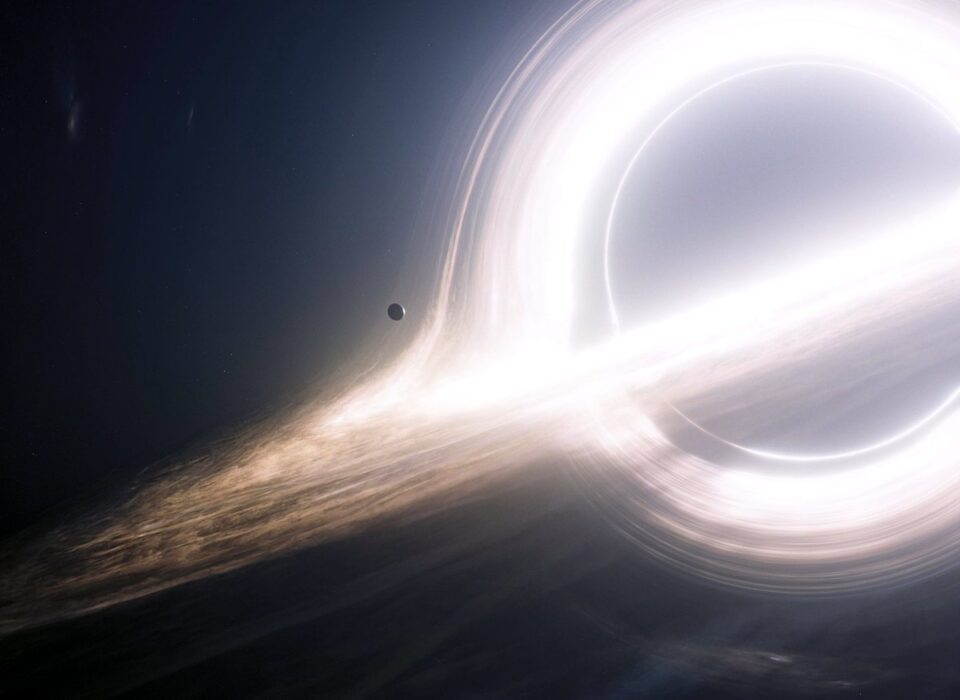You will die, absolutely! Your friend will lie down like a noodle and you will be burned alive to ashes. But according to Einstein, “death” is only an external “illusion”. In fact, you are still alive and completely at peace.
What if you fell into a black hole?
If you’ve seen the movie Interstellar (2014) directed by Christopher Nolan, you’ll know the scene where Captain Cooper fell into the Gargantua black hole. And Cooper was completely unharmed after crossing the event horizon. “Fictional”, you might say it when you see it. But according to Einstein, the above is possible.
But before we get into the big deal, you probably know that Interstellar is built on the very latest scientific knowledge of mankind. Most of the scenes in this fantasy film were drawn by Nolan in consultation with physicists. For example, the image of the black hole in the movie is not the “hole” as you can see in the images that we will see below, but a sphere. Why? Because a black hole is a point where space-time “collapses” into a single point. And our space is three-dimensional, so their collapse is reduced to a spherical point.
However, in most of the pictures you see of black holes, show them as a vortex. The reason for this is that the spaces they contain are depicted in a two-dimensional form and such a description allows the viewer to easily imagine the nature of the black hole – ‘attractive’ points that even light cannot escape, such as Les ships accidentally entered the vortex and drowned in it. If it was shown on a sphere like Interstellar, a lot of people wouldn’t understand the problem. Here we also use the vortex to talk about black holes. Of course, not everything is real in Interstellar, but Nolan has tried to show what modern science is.
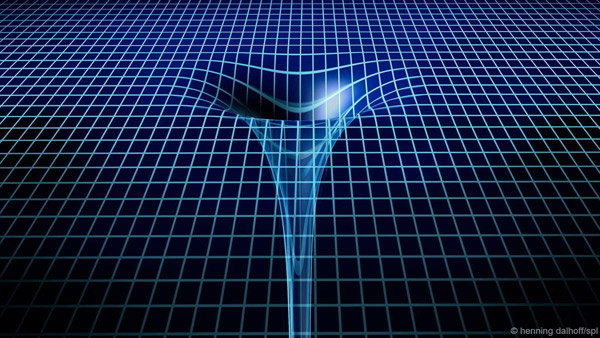
A black hole is a singularity where space-time is punctuated
So if you fell into a black hole, would it be like Cooper, completely unharmed? To some extent, well … maybe. Called “maybe” because the thing is being observed by who, you or the person outside the black hole. Depending on the angle of view, things will be completely opposite.
Pick up photos of Cooper and Amelia when he fell into Gargantua while she was outside the black hole observing everything. Everything will be different in our opinion from Cooper’s or Amelia’s point of view.

By Amelia
As Cooper nears the event horizon, she will see him stretch out like a sprinkle. This is due to the difference in suction force between the start and end points of Cooper. Assuming Cooper put his foot in first, the gravity of the black hole on it would be much larger than his head. Additionally, Cooper’s height will also be much smaller, Amelia has to use a magnifying glass or telescope to track things.
But the problem is not over. Amelia would feel that what she was seeing was like a slow motion movie. Cooper’s image reaches him “more slowly.” It is also the gravity that causes this situation. Black holes are so special that light won’t escape them if they accidentally cross the event horizon. But even when photons aren’t engulfed by a black hole, their speed is drastically reduced. Especially when they are closer to the event horizon. Of course, reducing from 300,000 km / s to zero would be a slow process of 250,000 … 200,000 … 100,000 …
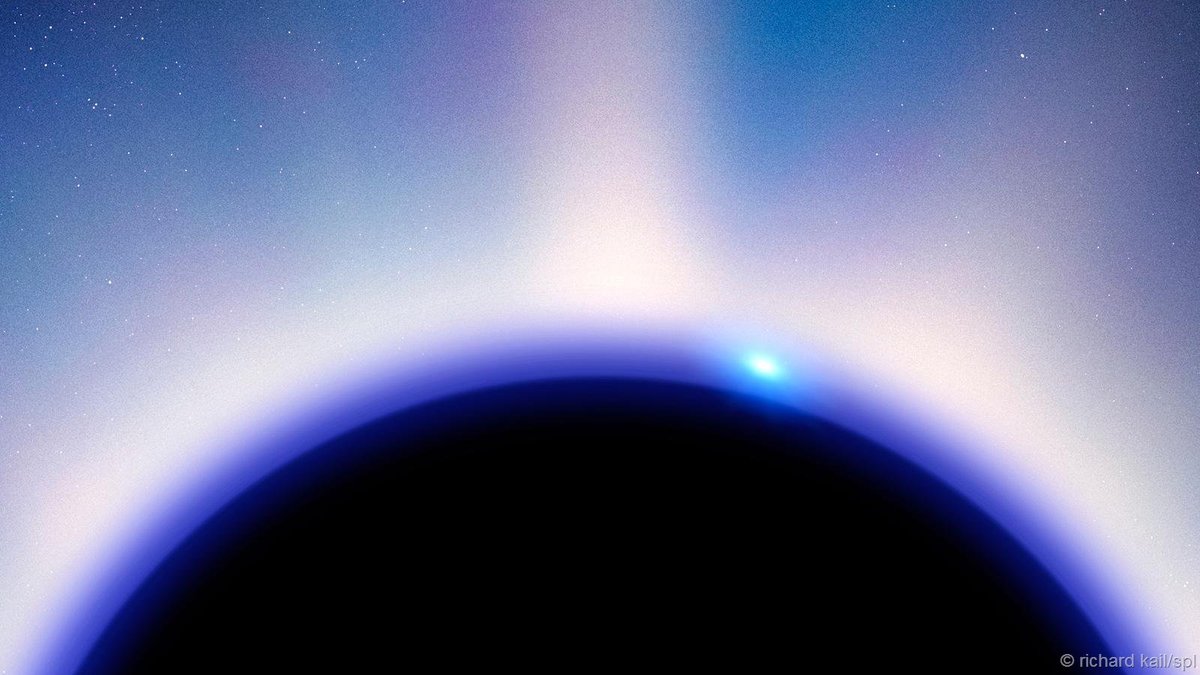 Around the black hole is a huge amount of radiation
Around the black hole is a huge amount of radiation
Assuming that Cooper communicates with Amelia via radio waves (a type of electromagnetic radiation), the transmission speed will slowly slow down as he nears the event horizon. You will receive long and slow signals like: “Ok .. a … y … T … oh …………. I ………. ……….. đ …….. đ ……………… … dd ……. ……………. at ………………….. ………. ………………. o ……………… ……….. o ………………………….. “. And by the time Cooper disappeared behind the event horizon, Amelia would no longer receive his signals.
Before that, however, before Cooper crosses the event horizon, Amelia will find him burnt to ashes, by the radiation of Stephen Hawking. According to Hawking, as a balance between an environment with the highest density of matter in the universe and a vacuum without matter around it, a black hole will gradually lose its mass as radiation emitted into the universe. event horizon. And Cooper, in Amelia’s gaze, “died without yawning” from that enormous amount of radiation.
From Cooper
Everything looked terrible on Amelia’s side (outside the black hole). But according to Cooper himself, things are completely opposite. Or according to Albert Einstein, the father of the theory of relativity, Cooper will be completely safe, he will not be stretched like a vermicelli fiber, nor will he be burnt to ash by radiation. Cooper’s only problem is that after crossing the horizon, he won’t be able to contact Amelia anymore.
The world appears to be dividing in two after Cooper crosses the event horizon. His world and that of Amelia. In Amelia’s world, he’s dead. But in Cooper’s world (in the black hole) he still lives.
 But behind the horizon can be completely still
But behind the horizon can be completely still
However, this is the problem. According to physicists, space-time in the black hole exchanges with each other in relation to our outside world. In other words, in a black hole there is only one dimension of space – the central direction. Cooper will only have one direction of movement, just like his radio waves, he cannot escape. So even though Cooper is alive (according to Einstein), he has no way of telling Amelia and we know it.
In contrast, time in a black hole has many dimensions. We don’t know how the other dimensions of time are, because our world has only one direction to the future. But perhaps one of these dimensions is looking to the past. Nolan capitalizes on this idea in his film. It allows Cooper to reflect on the past, revisiting images of his daughter and himself decades ago. Even Nolan takes things to the fictional level by allowing Cooper (in the black hole) to interfere with Cooper (past) by sending the central coordinates of NASA with strips of sand.
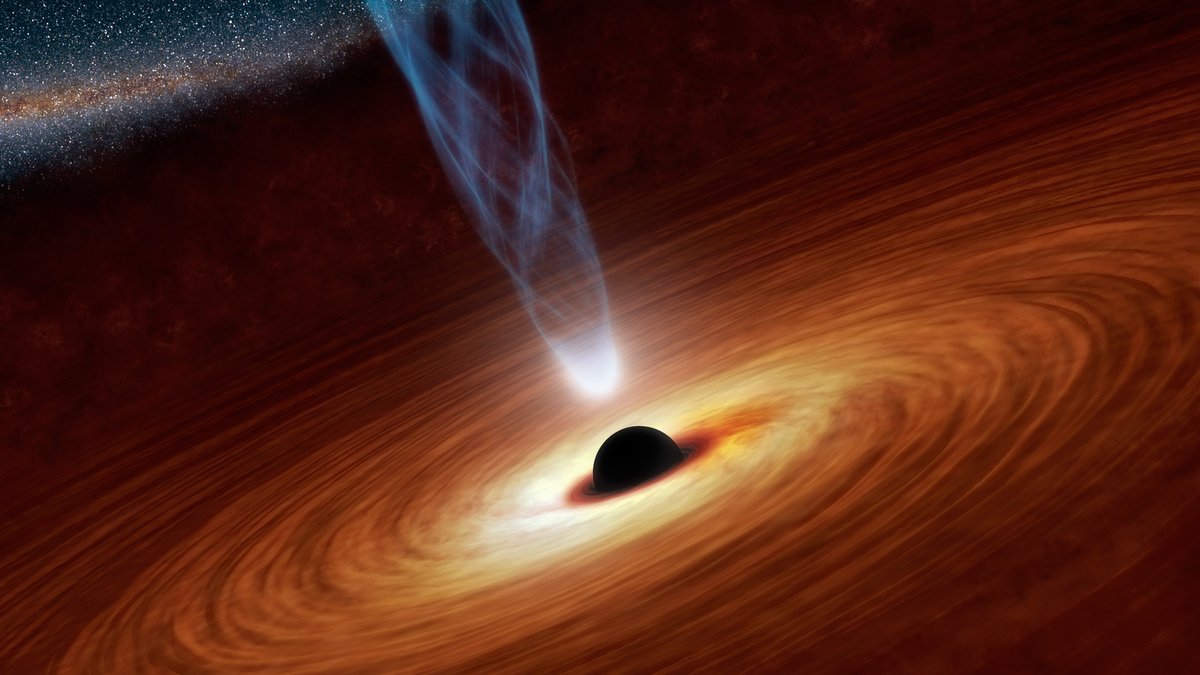
Space-time after the black hole is the opposite of the outside world
However, at the current level of science, we cannot say whether Nolan’s idea is correct or not as it leads to many paradoxes. If Cooper (in the black hole) hadn’t returned these coordinates in the past, perhaps he would still be a pale old man now, not doing an Interstellar, or Cooper (in black holes) will not exist. never.
How to verify?
Maybe Einstein was right about Cooper’s fate. But this is only theory, it has never been verified. In fact, Einstein mistakenly added a constant to his equation of the universe so that it “wouldn’t expand”, which he later claimed was his “dumbest mistake.” Thus, there is no guarantee that Einstein is not wrong again. But to know if Einstein is right or wrong … only experiments can confirm it!
But this experience not only requires a person brave enough to take their own life to verify it, but also a new medium of communication which is completely beyond our knowledge. This strange communication is known as “quantum entanglement”.
 “Quantum confusion” is one of the most puzzling physical phenomena
“Quantum confusion” is one of the most puzzling physical phenomena
And quantum mechanics is another Einstein mistake. This famous physicist is in fact very “anti” of quantum theories. Known for his saying “God does not play dice,” Einstein strongly objected to the idea that the results of observations depend on the viewer and not on the nature of the question. However, the latest scientific experiments have concluded that Niels Bohr (father of quantum theory) is right and Einstein is wrong.
The funny thing is, to find out if Einstein is right about black holes, physicists have just proposed an experiment based on … quantum theory.
But why is “quantum entanglement” necessary? As we all know, communications based on electromagnetic waves (radio, light, radiation …) are based on the space-time grid. Behind the black hole there is only one radial dimension, which means that Cooper (if he is alive) cannot communicate with Amelia on the basis of electromagnetic waves. Therefore, Cooper must use another way to show that Amelia knows she is alive.
Quantum mechanics says that somehow, if two particles of matter are “entangled” with information, when the state of one changes, the other will instantly “know” and change relative. match regardless of the distance between them. For example two electrons have a total spin of zero, if one particle spins counterclockwise the other will spin in the opposite direction to make sure their total spin stays the same. Einstein sarcasm at this bizarre phenomenon as “spooky action at a distance”. But no matter how much Einstein objected, the phenomenon happened.
 Quantum laser experiment proved Einstein wrong
Quantum laser experiment proved Einstein wrong
On this basis, modern physicists come up with a communication solution for Cooper. Outside the black hole, Amelia would place a quantum crawler that the black hole would emit. Whether Cooper is alive or just contains ashes, Amelia will get a bunch of A data.
The key is that A will be “mistaken” for the data Cooper left behind. If Cooper dies, that creates B data. And Cooper still lives behind the black hole, his presence creates C data. But A will only “mess” up B or C, which doesn’t exist. both at the same time. When Amelia deciphers Package A, we’ll know if Cooper is really alive or not.
The only problem here, according to the scientists worry, is whether Amelia decoded data packet A or not. Quantum data can be too big and too many parameters, the fastest supercomputers available to humans are not guaranteed to solve immediately. They fear it could take billions of years to find the B or C answers. Even when the black hole “evaporated” into radiation, Amelia had no answer.
So, the black hole, as the name suggests, is possibly the best secret hiding place science can find.
The portal to space travel
You’re probably wondering if Cooper lives or dies after falling into a black hole? Cooper can’t get out anyway, is there any difference between being dead?
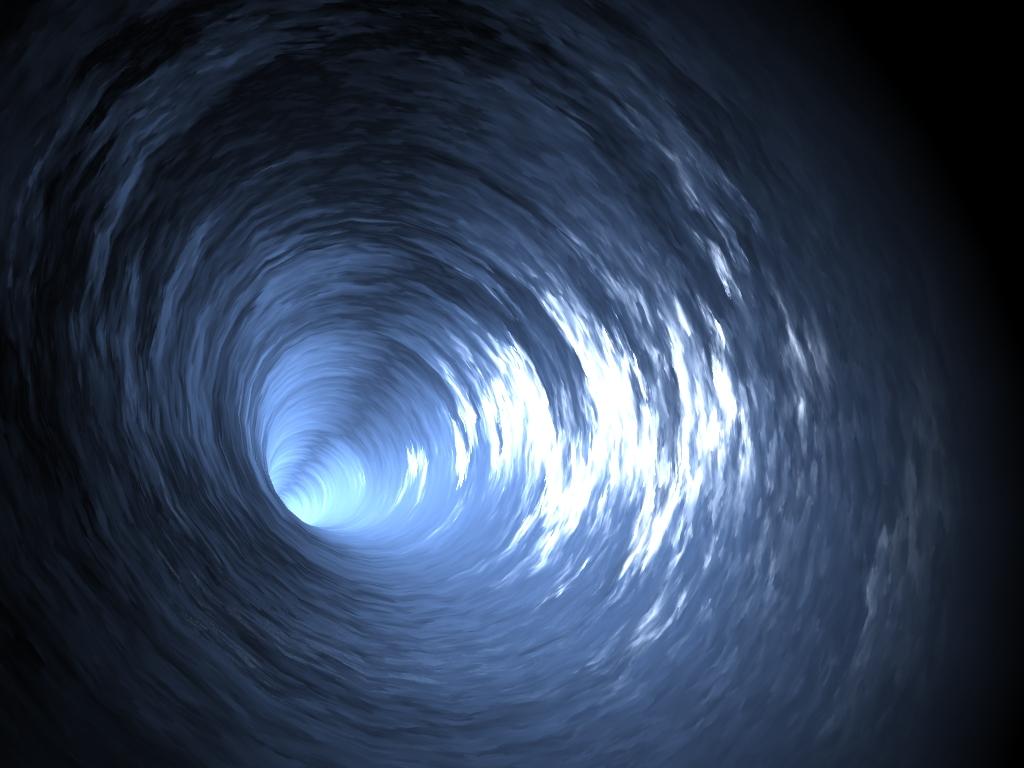 Drillers can be a ‘shortcut’ to new horizons
Drillers can be a ‘shortcut’ to new horizons
The answer is that a black hole (or a wormhole) could hold the key to space travel. As you know, the stars and planets closest to us are also decades of light years old. There is no indication that humanity can move a ship at the speed of light. In addition, although until now it is impossible to explore galaxies billions of light years away. The energy source available to this planet is not sufficient for such long journeys.
And not to mention the fact that the universe is expanding at an ever increasing rate. In the Big Freeze scenario the universe will expand forever, the galaxies we can still see today are unlikely to see them later, even if their images reach us at the speed of light. .
But the black hole / wormhole could help humanity explore the universe if Einstein was right – we’re fine after we have fallen into it. In essence, the wormhole is also a black hole, but it has 2 ends (in – out), one end specializes in sucking up matter and the other end “dumps” everything, in another remote location. of the universe. . What Nolan simulates shows us in Interstellar.
 Deep holes can be linked together like a space bus network
Deep holes can be linked together like a space bus network
Imagine black holes / wormholes like the bus stops you use every day. If this picture is correct, the exploration of the universe still seems within the reach of humanity.
The only problem that remains is, how do you find a black hole or a wormhole somewhere “near” here? Or like Interstellar, a civilization that “opened the door” to “enlighten” humanity?
According to Chris Impey, professor of astronomy at the University of Arizona, black holes in the universe form when a large star dies.
A black hole can only be detected if there is a star next to it. “It is this star that allows astronomers to see the black hole – a ‘companion’ in the star’s shadow,” the scientist said.
According to astrophysicists, black holes move quite slowly. In the future, when all the stars and galaxies die, they will be the last to remain in the universe.


